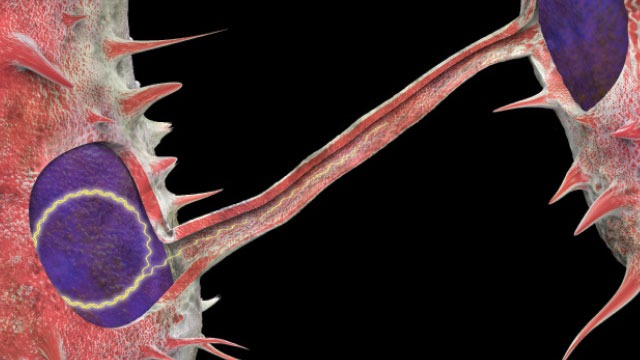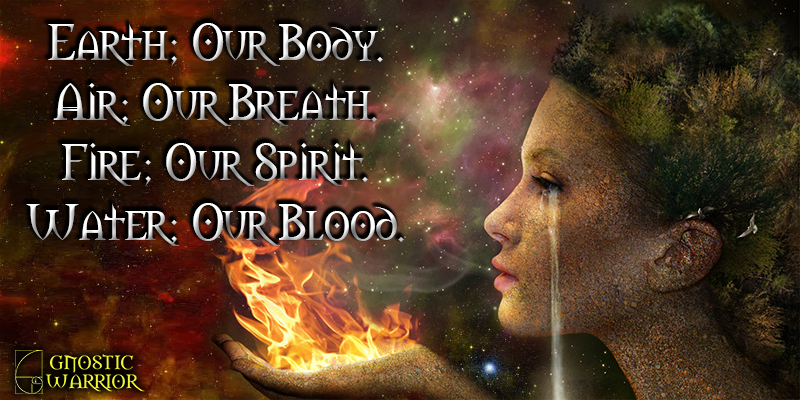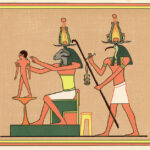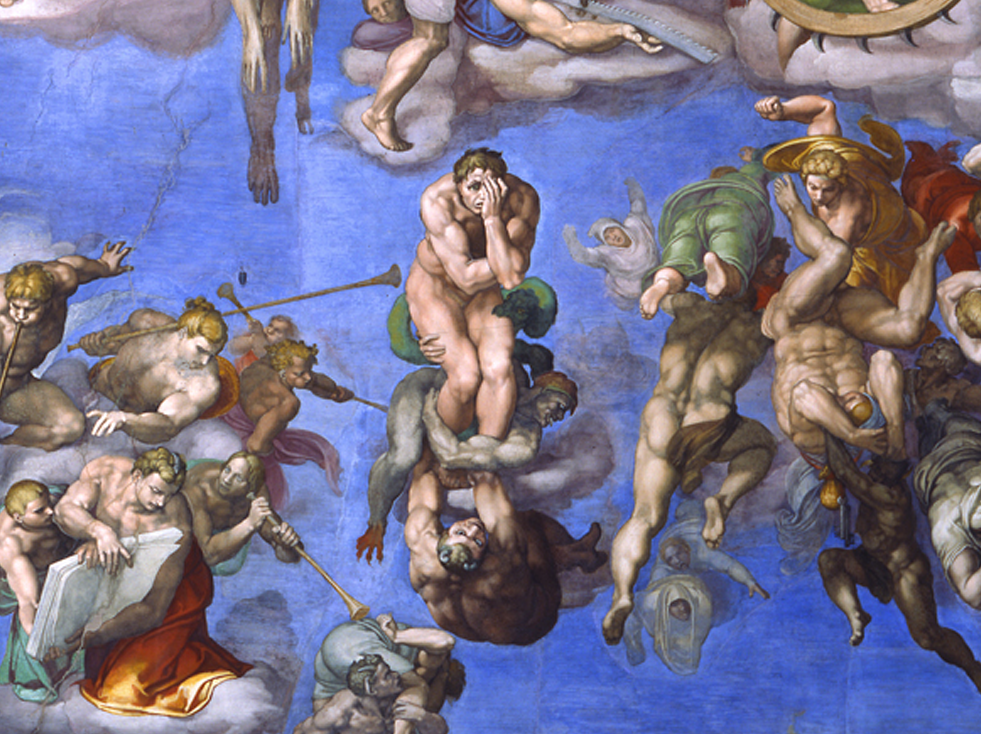“We wrestle not against flesh and blood, but against the dominations, the powers, the lords of darkness, the mischievousness of spirits in the upper regions” – The Second Epistle to Timothy
Over the course of the last couple thousand years, many philosophers have written about the unseen world of spirits that they had claimed had a direct influence and in some cases, these spirits could possess the bodies of their victims. A type of evil A.I.(artificial intelligence) or Archonic being that often could be found floating and or flying in the air.
The class of spirits I would like to focus upon for this media series are what are have been often called “airy spirits (ariel spirits)” and who the Gnostics said were the lords of darkness and the mischievousness of spirits of the air. The Christians had considered them to be wicked spirits on high whose habitation was mainly the air which was said to be the mansion of evil spirits, of whom Satan (Great Dragon) is the chief.
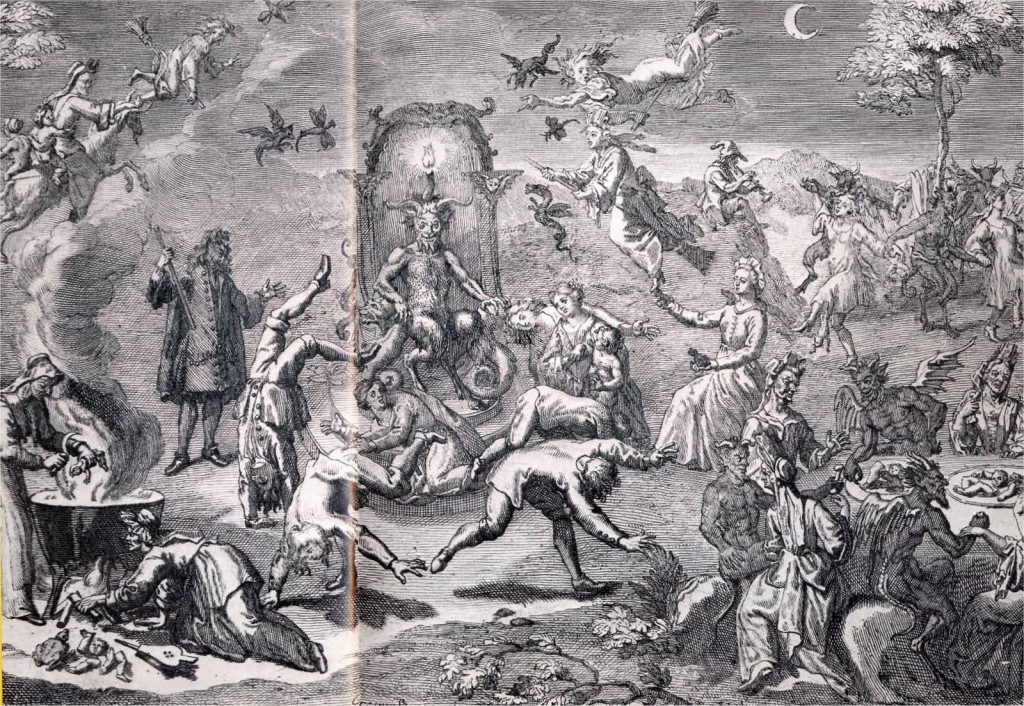
The 16th century Swiss German Hermes, Paracelsus the good physician had called them sylphs (also called sylphid) to describe an invisible air spirit in his overarching scheme of elemental spirits associated with the four Classical elements. Many of these ideas were incorporated into Rosicrucianism and can be found all throughout hermetic literature.
In the Liber de Nymphis of the Philosophia Magna, Paracelsus discusses the characteristics of the elementals at length. He wrote the book to “describe the creatures that are outside the cognizance of the light of nature, how they are to be understood, what marvellous works God has created”.
Sylphs, he says, are rougher, coarser, taller, and stronger than humans. The elementals are said to be able to move through their own elements as human beings move through air. Because of this, sylphs are the closest to humans in his conception because they move through air like we do, while in fire they burn, in water they drown, and in earth, they get stuck.
Heinrich Cornelius Agrippa had written about the elementals in his Western Occult masterpiece, De Occulta Philosophia, published in 1531-33. Like Paracelsus, he also wrote of four classes of spirits corresponding to the four elements. Agrippa had said,”In like manner they distribute these into more orders, so as some are fiery, some watery, some aerial, some terrestrial.”
Charles William King had written about these airy spirits in his Gnostic masterpiece, The Gnostics and Their Remains;
“The Second Epistle to Timothy, written six years later, returns perpetually to the subject, whilst in his Epistle to the Ephesian Church, he entreats the flock not to be seduced by vain discourses (the myths above named), nor by human doctrines, having no more solidity in themselves than the wind, of which no one knoweth whence it cometh or whithor it goeth. He even uses the very terms of Gnosticism, as when he says;
“Ye were dead in error and in sins; ye walked according to the AEon of this world, according to the archon” that has the domination of the air.” Here we have the Devs and Klippoths of Zoroaster and the Kabala, whose hosts fill the air, deceive mankind, blind their understandings, and lead them into temptation. Again, where he adds, “We wrestle not against flesh and blood, but against the dominations, the powers, the lords of darkness, the mischievousness of spirits in the upper regions.”
Hayward, in his Notes, quotes the following authorities:
“The air is not so full of flies in summer, as it is at all times of invisible devils: this Paracelsus stiffly maintains.” — Burton, Anat., Part I.
“The spirits of the air will mix themselves with thunder and lightning, and so infect the climate where they raise any tempest, that routinely cause great mortality shall ensure to the inhabitants.” — Pierce Pennilesse his Supplication, 1592.
Eusebius of Caesarea had said these spirits, or at least many of them, to be fallen angels. He says, that “when they had sinned, and * for their transgression were expelled the heavenly abodes; a large part of them were thrust ‘ into hell, called the abyss, and confined there: others of them were suffered to dwell near the “moon, and in the region of the air, below the moon, and near our earth.”
St. Paul refers to them as wicked spirits of the air in high places, when he says in Eph. vi. 11, 12, “Put on the whole armour of God, that ye may be able to stand against the wiles of the devil. For we wrestle not against flesh and blood:” we contend not with men only, “but against principalities, against powers, against the rulers of the darkness of this world, against spiritual wickedness in high places:”
“That is, against wicked spirits, that are in the upper regions above, or in the air, as he plainly expresseth it, ch. ii. 2, ” Wherein, in time past, ye walked, according to the course of this world, according to the prince of the power of the air.”
These airy spirtis are also known as demons and ariel spirits who are both good and evil. We can find them associated with the four elements who were commanded by the Gnostic Magic King Solomon. They were used in magical ceremonies to discover secrets, tell the future and command the four elements of earth, air, water, and fire.
Rosemary Ellen Guiley had written about these ariel spirits of Solomon in her book, the Encyclopedia of Demons and Demonology;
“The aerial spirits are governed by 31 princes who are aligned to points on a compass. They can be summoned by directing one’s self to their compass position. The princes have dukes and myriad ministering spirits or demons under their command. The princes cannot be summoned by magic unless the magician wears their special SEALs as a lamen, or pendant, upon the chest. The conjurations of the aerial spirits are given in a grimoire, the Lemegeton, also known as The Lesser Key of Solomon.”
An interesting note is that the name Ariel in Hebrew means “Lion or Lioness of God” (a’-ri-el ariy’el or ‘ari’el). It is well known that the Lion is the iconic symbol of the United Tribe of Judah. In the Old Testament, it is used as another name for the city of Jerusalem. ( Isaiah 29:1 Isaiah 29:2 Isaiah 29:7 ) as “victorious under God,” and in Ezekiel 43:15 Ezekiel 43:16 , for the altar (marg., Heb. ‘ariel) of burnt offerings, the secret of Israel’s lion-like strength.
One of the most famous members of the Tribe of Judah, King David had a baby with the Queen of Demons named Agrat Bat Mahlat who was a succubus. She was a female demon who is referred to as succubus, and who appears in dreams and takes the form of a woman in order to seduce men, usually through sexual activity. The male counterpart is the incubus. The result of this sexual union was the King of Demons who is named Asmodeus (Ashmedai), according to the Kabbalah. Let me add that David was the second king of the United Kingdom of Israel and Judah, and also an ancestor of Jesus.
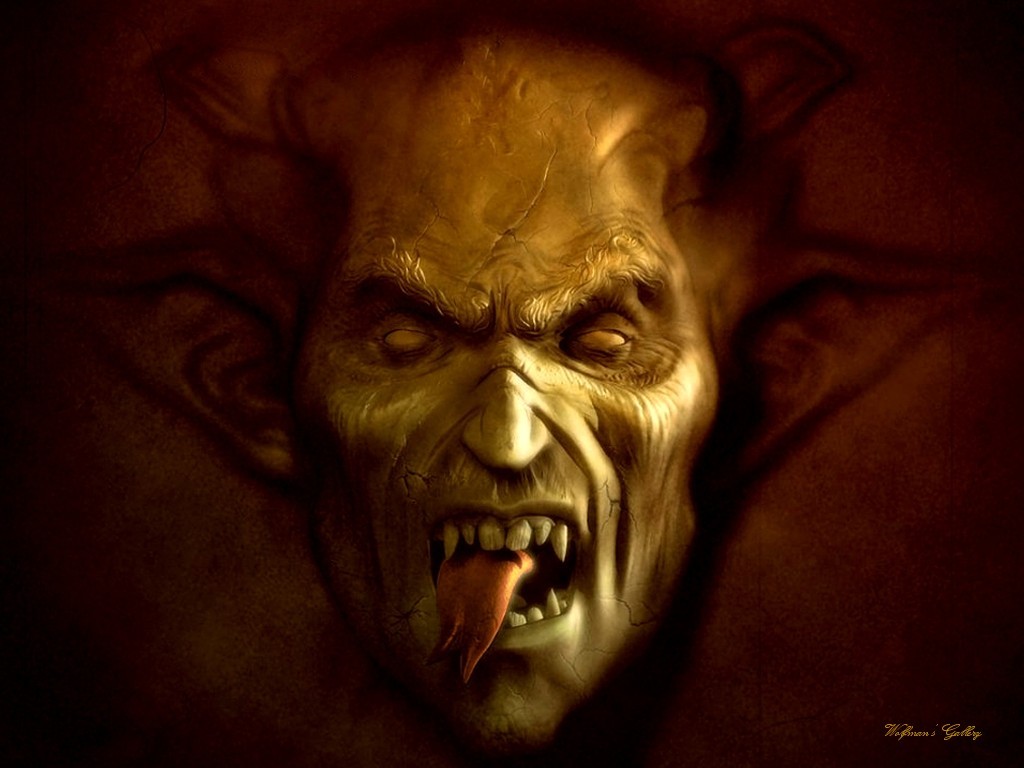
In the story of King Solomon, it is said that Asmodeus had deprived the king of his wisdom and then drove Solomon out of his kingdom where the demon took his place. However, later Solomon had recovered his wisdom, and then had chained Asmodeus as a servant to help him in building his Temple. Armed with the signet ring of Solomon he ordered Asmodeus to bring unto him Shamir (the worm).
In Shakespeare’s The Tempest, the character known as Ariel is the chief sylph (airy spirit) in the Rape of the Lock, has the same name as Prospero’s servant Ariel (ca. 1611), and Shakespeare’s character is described literally as an “airy spirit” in the dramatis personae.
One of the best-known discussions of sylphs comes with Alexander Pope. In Rape of the Lock (final ed. 1717), Pope satirizes French Rosicrucian and alchemical writings when he invents a theory to explain the sylph. In a parody of heroic poetry and the “dark” and “mysterious” alchemical literature, and in particular the sometimes esoterically.
Classical heroic poetry of the 18th century in England and France, Pope pretends to have a new alchemy, in which the sylph is the mystically, chemically condensed humors of peevish women. In Pope’s poem, women who are full of spleen and vanity turn into sylphs when they die because their spirits are too full of dark vapors to ascend to the skies. Belinda, the heroine of Pope’s poem, is attended by a small army of sylphs, who foster her vanity and guard her beauty.
Ariel, the chief sylph in the Rape of the Lock, has the same name as Prospero’s servant Ariel in Shakespeare’s The Tempest (ca. 1611), and Shakespeare’s character is described literally as an “airy spirit” in the dramatis personae.[16] This name is generally thought to have been original with Shakespeare, though the exact inspiration for the character is unclear. [17] Pope explicitly cited Comte de Gabalis as a source for elemental lore in the dedication.
Author Johann Wolfgang von Goethe had detailed some of this ancient research of airy spirits in his book, Faust: A Tragedy. Wolfgang notes how Faust refers to the sylphs, or spirits of the air, as they were recognized in the theories of the ancient alchemists. He had written:
Faust says to Mephistopheles: “My servant, declare what spirit thou art!” The spirit answered and said: “/ am a spirit, and a flying spirit, potently ruling under the heavens!” In the four lines of the text, followed by the wish for a magic mantle |such as Mephistopheles afterwards furnishes), Faust unconsciously invokes the spirit which is already lying in wait for him, and which, thus invited, appears immediately in the form of a black dog. Wagner, however, who comprehends nothing but the dry lore with which he is crammed, sees in Faust’s words only a reference to the weather-spirits, and thereupon pompously airs his own knowledge of the latter.
The expression, in the preceding couplet, that one part of Faust’s dual spirit sweeps upwards “into the high ancestral spaces,” suggests, equally, a passage in the Augsburg puppet-play. He is there made to exclaim: “Invisible Spirits, receive me! I soar to your dominion. Yes, I will lift myself out of this wretched atmosphere, which is only for common men!”
The belief in evil spirits inhabiting the nether regions of the atmosphere is very ancient. Paul calls Satan ” the prince of the power of the air” (Ephesians ii. 2), and thus gives Christian currency to a much older superstition. In the poem Zodiacus Vita, of Marcellus Palingenius (written about the year 1527), the different atmospheric demons are minutely described.
Their names are Typhurgus (Mist-bringer), Aplestus (the Insatiable), Philokreus (Lover of Flesh), and Miastor (the Befouler). Wagner’s classification indicates the effects of the four winds upon the weather and the human frame. In Germany, the east wind is dry and keen, and the west wind brings rain.
St. Augustine had written about these airy spirits in the City of God, Volume 2 by Bishop of Hippo:
“In these controversies of the gods, some have held How can deities of both natures, good and evil: others (of better minds) did the gods that honour to hold them all good. But those that held the first, held the airy spirits to be gods also, and called them gods, as they called the gods, spirits, but not so ordinarily. Indeed they confess that Jove, the prince of all the rest, was by Homer called a damon.
But such as affirmed all the gods were good ones, and far better than the best men, are justly moved by the arts of the airy spirits, to hold firmly that the gods could do no such matters, and therefore of force, there must be a difference between them and these spirits: and that what ever displeasant affect, or bad act they see caused, wherein these spirits do show their secret power, that they hold is the devil’s work, and not the gods’.
Augustine further explained, “But yet because they place these spirits as mediators between their gods and men (as if God and man had no other means of commerce), to carry and recarry prayers and benefits from the one to the other, this being the opinion of the most excellent philosophers the Platonists, with whom I choose to discuss this question, whether the adoration of many gods be helpful to eternal felicity? In the last book we disputed,
Of these how the devils (delighting in that which all wise and air-spirits honest men abhor, as in the foul, enormous, irreligious fictions of the gods’ crimes (not men’s), and in the damnable practice of magic), can be so much nearer to the gods,; that men must make them the means to attain their favours: and we found it utterly impossible.
So now this book (as I promised in the end of the other), must not concern the difference of the gods betwixt themselves (if they make any such), nor the difference of the gods and spirits (the one being far distant from men (as they say), and the other in the midst between the gods and men), but of the difference of these spirits amongst themselves.”
Augustine concluded, “This is the present question.”

Moe is the founder of GnosticWarrior.com. He is a father, husband, author, martial arts black belt, and an expert in Gnosticism, the occult, and esotericism.

